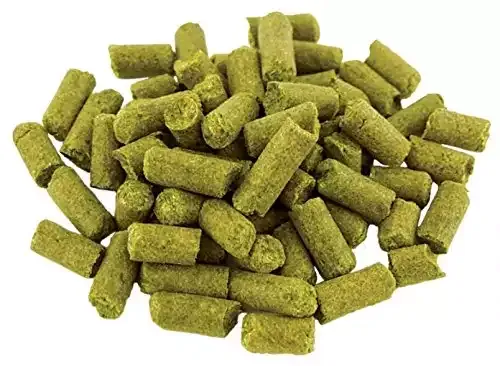
Comet hops were developed by the USDA in 1961, but their commercial production was discontinued in the 1980s. However, Comet made a comeback with the growing demand for aroma hops in the 1990s.
Comet is known for its ability to function as both a high-performing bittering hop and an offbeat aroma hop, with a unique “wild American aroma” that is either loved or hated. It works well with a variety of beer styles. Despite its modest annual production, it offers some of the most unique flavors in a hoppy beer.
| Usage: | Dual-Purpose |
| Country of Origin: | United States |
| Hop Growers Code: | COM |
Where To Buy Comet Hops
Comet is an interesting bittering hop which has made a comeback. Comet has a blend of both wild grassy aromas and zesty grapefruit character. Generally used for bittering, the flavor and aroma of this hop beg to be experimented with in late additions.
Comet Flavor And Aroma
Comet is a dual-purpose hop that is often described to have the following aroma characteristics:

mandarin, tangerine

wild grass, lemongrass

herbal
Comet Hop Oil Breakdown
Hop oils can vary from year to year and farm to farm but based on our research, here are the typical values we have seen reported. This information comes from various hop farms, The Hop Aroma Compendium, and For The Love Of Hops.
| Alpha Acid % (AA) Alpha acids are what is isomerized when boiling to create bitterness in beer. | 8% – 10.5% |
| Beta Acid % Beta acids are what give hops their more aroma and flavor compounds. | 4% – 5% |
| Alpha-Beta Ratio This ratio of alpha acids to beta acids determines how quickly bitterness fades during aging. Lower ratios are common for aromatic varieties. | 1:1 – 4:1 |
| Co-Humulone as a % of Alpha Higher numbers are said to impart a harsher bitterness. | 34% – 37% |
| Total Oils (mL/100g) With more total oils, typically comes a more complex hop profile but these are highly volatile compounds. | 1mL – 3.3mL |
| Myrcene green, resinous | 50% – 60% |
| Humulene woody, piney | 0.5% – 2% |
| Caryophyllene woody | 8% – 13% |
| Farnesene floral | 0.1% – 1% |
| Other Oils: Includes beta-ionine, beta-pinene, limonene, linalool, geranoil & selinene | 21.2% – 39.9% |
| Hop Storage Index (HSI) The HSI indicates the percent of alpha and beta acids lost after 6 months of storage at room temperature (68°F or 20°C). | Retains 67% of its alpha acid after 6 months of storage at 20ºC (68ºF). |
| Hop Storage Index (HSI) Rating | Fair |
Comet Hop Substitutions
Replacing one hop for another is seldom straightforward but sometimes you don’t have the right hop or the right quantity of hops for the beer you want to make. For those situations, we have made a comprehensive list of hops to substitute on brew day.
These substitutions aren’t perfect as hop chemistry is pretty complex.
We wanted to make this list of substitutions with varietals that are easy to find when possible. For Comet, we recommend substituting with the following hops:
Beer Styles
For the most part, any hop could have a place in just about any beer style. Based on popular beers, historical usage, and our own preferences, we would recommend using Comet for IPA, New England IPA, Pale Ale, Wheat Beer, Golden Ale. That being said, experiment and see what works best for you.
References
https://www.hopslist.com/
https://www.ars.usda.gov/
https://www.brewersassociation.org/
https://www.barthhaasx.com/
https://www.yakimachief.com/
Hieronymus, Stan. For The Love of Hops. Brewers Publications, 2012
The Hop Aroma Compendium. 2012


